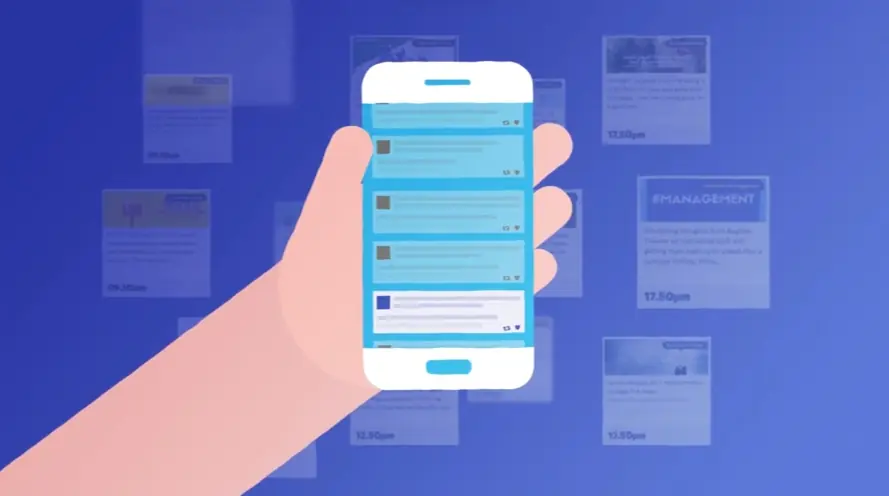
How can animation clarify complex features in a software tour video?
Animation clarifies complex software features by visually demonstrating functionality step-by-step, enhancing user comprehension. Exploded views and cutaways reveal inner workings.
What branding best practices apply to animated feature tour videos?
Consistent branding is essential. Integrate brand colors, logos, and messaging seamlessly into the animation style for a cohesive brand experience.
How do leading companies utilize animated walkthroughs for customer onboarding?
Animated walkthroughs streamline customer onboarding by simplifying complex features and demonstrating product value quickly and engagingly.
How can an animated feature tour video resonate with my specific target audience?
Resonance is achieved by tailoring animation style, tone, and messaging to your target audience's specific interests and preferences. Conduct thorough audience research.
How can a feature walkthrough video highlight my product's unique selling propositions using animation?
Highlight unique selling propositions through dynamic visuals, showcasing benefits and competitive advantages. Use clear, concise messaging.
What makes an engaging and memorable animated feature tour video?
Engaging animated feature tours combine clear storytelling, compelling visuals, concise messaging, and a memorable call to action.
How can an animated explainer video boost user engagement with my product's features?
Explainer videos boost user engagement by simplifying complex features, encouraging interaction and deeper product understanding.
How can a professional repurpose my existing materials into an animated feature tour?
Existing materials like manuals or marketing copy can be repurposed into engaging animated feature tours, maximizing content value.
What lead generation strategies are effective with animated feature tour videos?
Effective lead generation strategies include clear calls to action within the video, directing viewers to landing pages or contact forms.
What's the typical production timeline for a professional animated feature tour video?
Typical production timelines range from 3-8 weeks, depending on complexity and revisions. Pricing for a 60-second video can range from $1000-$6000 depending on complexity.
How can animation showcase solutions to customer pain points in a feature tour?
Animation showcases solutions by visually demonstrating how the product addresses specific customer pain points in a relatable manner.
What pre-production steps are crucial for an effective animated feature tour video?
Crucial pre-production steps include defining objectives, target audience, key features, script development, and storyboard creation.
How can customer testimonials be integrated into an animated feature tour video?
Customer testimonials can be integrated through animated text, voiceovers, or character representations, adding credibility.
What animation styles best suit a feature tour video for software?
Clean, modern animation styles often suit software, emphasizing functionality and user interface. Consider minimalist or infographic styles.
How can I adapt existing animated feature tour videos for my product?
Adapting existing videos involves customizing the script, visuals, and branding to align with your product and target audience.
Anatomy of High-Converting Animated Feature Tours
Delving into the anatomy of tours that truly convert, the impact of an effective Animated Feature Tour Video hinges on several interconnected elements. They move beyond simple demonstrations, transforming complex functionalities into clear, compelling visual stories. This approach significantly enhances user understanding and perceived product value even before active engagement with the product begins.
Crafting these powerful assets demands a deep understanding of the audience's pain points and showcasing how the product offers tangible solutions. It is crucial to focus on benefits, articulating 'what's in it for them' through relatable scenarios and a concise, benefit-driven script. This clarity cuts through noise and resonates directly with viewer needs, building trust and interest effectively.
The visual design plays a pivotal role; a suitable animation style simplifies complex concepts, while visual hierarchy and highlighting techniques guide attention effortlessly. Leveraging animation's unique ability to visualize abstract processes makes the product's internal workings or difficult concepts intuitively understandable. Subtle micro-interactions can further reinforce functionality, enhancing realism.
Ensure a clear, prominent call to action prompting the desired next step, strategically placed for maximum impact.
Track engagement metrics like completion rates and click-throughs rigorously to measure performance and identify optimization areas.
Prioritize accessibility features including captions and sufficient color contrast, expanding the video's reach and impact across diverse audiences.
Master pacing to keep viewers engaged without rushing the presentation, allowing ample time for comprehension of key features and benefits presented visually.
Ultimately, these elements combine to create a persuasive and memorable viewer experience, driving higher conversion rates, improving product adoption, and providing clear ROI demonstration that resonates with potential customers.
Why Advids for Animated Feature Tour Video?
At Advids, we specialize in crafting captivating Animated Feature Tour Videos that elevate your brand and drive business growth. Our blend of creative storytelling, cutting-edge technology, and extensive experience ensures your vision translates into a compelling and effective tour experience.
Unlocking the Potential of Animated Feature Tour Videos:
Customized Animated Feature Tour Video Solutions: We tailor each project to showcase your product, service, or location in a dynamic and engaging way, perfectly aligned with your brand and target audience.
Creative Storytelling Through Animation: Our skilled animators and storytellers craft narratives that captivate viewers, highlighting key features and benefits while fostering a deeper understanding of your offering.
Cutting-Edge Animated Feature Tour Video Technology: We utilize the latest animation software and techniques to create visually stunning tours that leave a lasting impression.
Experience and Expertise You Can Rely On:
12+ Years of Proven Success: With over 3400 clients served, we possess a deep understanding of what makes Animated Feature Tour Videos truly effective. We've completed over 320 successful Animated Feature Tour Video projects.
Trusted by Industry Leaders: Brands like Razorpay, Ola, Mercedes, the United Nations, Continental, and Mercer trust Advids to bring their stories to life through compelling animation.
Client Satisfaction Guaranteed: Our commitment to excellence is reflected in over 109 five-star Google reviews, showcasing our talent, creativity, and dedication to client satisfaction.
A Collaborative Journey to Success:
Collaborative Process: We work closely with you throughout the entire process, from initial concept to final delivery, ensuring your vision is realized in every frame of the animation.
Strategic Communication: Open and transparent communication is paramount. We prioritize understanding your needs, target audience, and brand identity to create impactful Animated Feature Tour Videos that achieve your business objectives.
Ready to unlock the potential of Animated Feature Tour Video for your business with the latest video design trends of 2024? Let Advids be your trusted partner in transforming your ideas into engaging and effective animated experiences.
Checkout some of the projects and work our team at Advids has been producing:
What is a Animated Feature Tour Video?
An animated feature tour Video is a dynamic and engaging way to showcase the capabilities of your product or service using animation. Imagine a virtual tour guide, but instead of walking you through a physical space, it uses engaging visuals to highlight key features, benefits, and functionalities. These videos can range from simple product demos to in-depth explanations of complex processes, all brought to life through animation.
Animated Feature Tour Videos are particularly useful for businesses that need to communicate complex information in a clear and concise way . They can be used to explain how a product works, demonstrate its features, or provide a step-by-step guide for using a service. These videos can also be used to build brand awareness , generate leads , and drive sales .
What do top Animated Feature Tour Videos have in common?
Mastering animated feature tour videos requires a strategic approach focusing on impactful storytelling and clear communication of value .
Ideal Customer Profile - Deeply understand your audience's needs and pain points to tailor the message.
What makes Animated Feature Tour Video effective?
Exceptional Animated Feature Tour Videos are driven by a clear understanding of the target audience and a compelling narrative that effectively communicates the value proposition oduct or service.
Conversational Animated Feature Tour Videos aim to create engaging experiences that resonate with viewers. The key is to strike a balance between informative content and captivating visuals , ensuring that the video is both informative and entertaining.
Methods for creating effective Animated Feature Tour Videos include using high-quality animation , incorporating clear calls to action , and optimizing the video for different platforms . By focusing on these key elements, businesses can create videos that effectively communicate their message, engage their audience, and drive results.
How long should your Animated Feature Tour Video be?
Mastering animated feature tour video length hinges on aligning video type , use case , and funnel stage for optimal impact.
pre-production considerations for Determining Video Length:
Animated feature tour video length guide
| Animated Feature Tour Types | Video Length | Use Case | Funnel |
|---|
| Explainer Video | 45-60 seconds | Highlights key features and benefits concisely, using a clear narrative and engaging visuals, possibly with a minimalist style for clarity. | Awareness |
| Walkthrough Video | 1-1.5 minutes | Demonstrates the user flow, showcasing the feature's functionality step-by-step, ideal for a screen recording with voiceover. | Consideration |
| Tutorial Video | 1.5-2 minutes | Provides in-depth instructions on using specific features, potentially employing a 2D animation style for complex processes. | Decision |
| 2D Animation | 30-45 seconds | Captures attention with vibrant visuals, ideal for showcasing the product's core value proposition in a creative and memorable way, using a cartoon or flat style. | Awareness |
| Animated Screen Recording | 45-75 seconds | Combines the benefits of both screen recording and animation, highlighting key interactions and transitions smoothly, potentially using a modern style. | Consideration |
How to create Animated Feature Tour Videos?
Crafting compelling animated feature tour videos requires a strategic approach. Mastering the pre-production and production phases is key to creating videos that resonate with your Target Audience and effectively showcase your product's value .
* Target Audience - Deep audience research informs every creative decision , ensuring resonance.
Author & Editor Bio
A video producer with a passion for creating compelling video narratives, Jai Ghosh brings a wealth of experience to his role. His background in Digital Journalism and over 11 years of freelance media consulting inform his approach to video production. For the past 7 years, he has been a vital part of the Advids team, honing his expertise in video content planning, creation, and strategy.
His collaborative approach ensures that he works closely with clients, from startups to enterprises, to understand their communication goals and deliver impactful video solutions. He thrives on transforming ideas into engaging videos, whether it's a product demo, an educational explainer, or a brand story.
An avid reader of modern marketing literature, he keeps his knowledge current. Among his favorite reads from 2024 are "Balls Out Marketing" by Peter Roesler, "Give to Grow" by Mo Bunnell and "For the Culture" by Marcus Collins. His results-driven approach ensures that video content resonates with audiences and helps businesses flourish.




